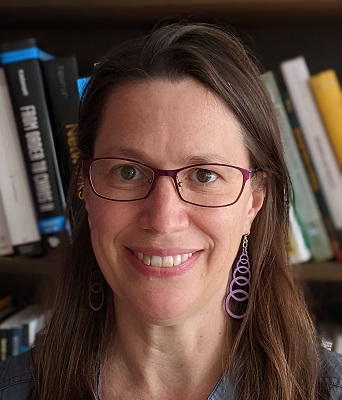Colloquium
Fingers, fractals, and flow in liquid metals
Speaker: Karen Daniels (Dept. of Physics, North Carolina State University, US)
A droplet of pure water placed on a clean glass surface will spread axisymmetrically, and a droplet of mercury will bead up into a spherical droplet. In both cases, the droplet is minimizing its surface energy -- creating an object with a minimized surface area -- and there is nothing to break the symmetry. Remarkably, droplets of the room-temperature liquid gallium-indium (EGaIn), which like all metals have an enormous surface tension, can nonetheless undergo fingering instabilities in the presence of an oxidizing voltage. I will describe how this oxide acts like a reversible surfactant which accumulates in a membrane-like layer at the surface, such that EGaIn placed in an electrolyte under an applied voltage can achieve near-zero surface tension. Remarkably, this microscopic layer is responsible for generate a huge diversity of morphologies --- fingering instabilities, tip-splitting, rippled droplets, and even fractals --- through Marangoni (surface tension gradient) effects. Remarkably, we find that this effect can in turn be used to suppress the Rayleigh-Plateau instability in falling streams. Quantitative control of these effects provides a new route for the development of reconfigurable electronic, electromagnetic, and optical devices that take advantage of the metallic properties of liquid metals.
